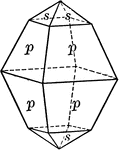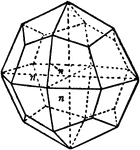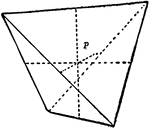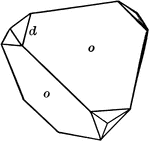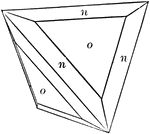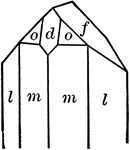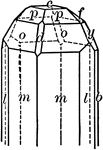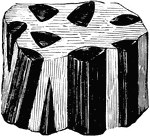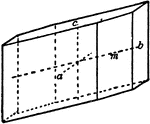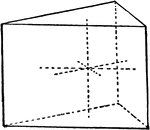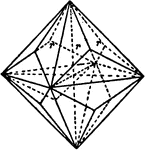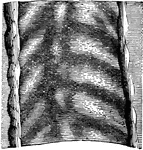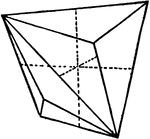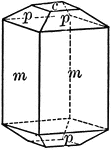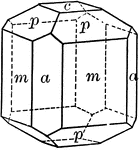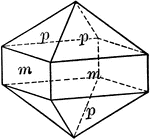
Stratified Rock
The different layers or strata are shown by the shadling's. Stratified rocks are the most common of…
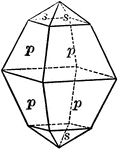
Sulphur
"Resinous luster. Color sulphur-yellow, varying with impurities to yellow shades of green, gray, and…

Sulphur
"Resinous luster. Color sulphur-yellow, varying with impurities to yellow shades of green, gray, and…
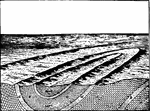
Syncline
This illustration shows a perspective view and a vertical section of a syncline. It shows the spoon-shaped…
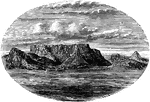
Table Mountain
Table Mountain is a mountain in the Western Cape, South Africa, overlooking the greater Cape Town area.

Temple of Scrapis at Puzzuoli
On the coast of Naples, near the ancient town of Puzzuoli, stand three marble pillars forty feet in…
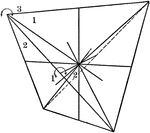
Symmetry of tetrahedral class
"The symmetry of this class is as follows: The three crystallographic axes are axes of binary symmetry;…
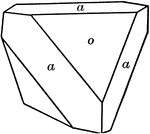
Tetrahedron and cube
"A combination of cube and tetrahedron. It will be noted that the tetrahedron faces truncate the alternate…

Negative tetrahedron
"The tetrahedron is a form composed of four equilateral triangular faces, each of which intersects all…
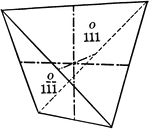
Positive tetrahedron
"The tetrahedron is a form composed of four equilateral triangular faces, each of which intersects all…
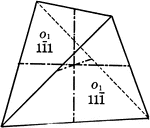
Positive and negative tetrahedrons
"If a positive and negative tetrahedron occured together with equal development, the resulting crystal…
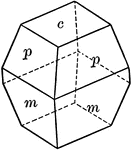
Titanite
"Monoclinic. Crystals varied in habit. Often with prominent basal plane which is steeply inclined and…
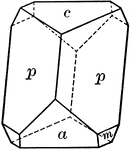
Titanite
"Monoclinic. Crystals varied in habit. Often with prominent basal plane which is steeply inclined and…

Topaz
"Orthohombic. In prismatic crystals terminated by pyramids, domes, and basal plane." — Ford, 1912

Tourmaline
"Tourmaline crystals show the forms of the Rhombohedral Class but with hemispherical development. They…
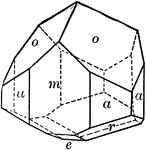
Tourmaline
"Tourmaline crystals show the forms of the Rhombohedral Class but with hemispherical development. They…

Tourmaline
"Tourmaline crystals show the forms of the Rhombohedral Class but with hemispherical development. They…
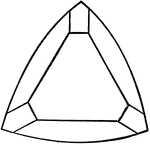
Tourmaline
"Hexagonal-rhombohedral; hemimorphic. Crystals usually prismatic, vertically striated. A triangular…
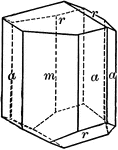
Tourmaline
"Hexagonal-rhombohedral; hemimorphic. Crystals usually prismatic, vertically striated. A triangular…
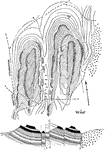
Trap Ridges
"Map and section of trap ridges near Woodbury. The topography is indicated by sketched contours, with…
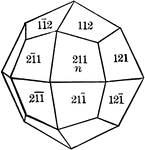
Trapezohedron
"The trapezohedron is a form composed of twenty-four trapezium-shaped faces, each of which intersects…

Trilobite
"Trilobite from the Silurian rocks. Pultowa, Russia (Illaenus crassicauda)." -Taylor, 1904

Trisoctahedron
"The trisoctahedron is a form composed of twenty-four isosceles triangular faces, each of which intersects…
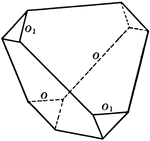
Tristetrahedron
"The faces of the tristetrahedron correspond to one-half the faces of a trapezohedron." — Ford,…
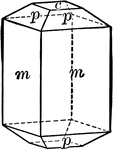
Vesuvianite
"Tetragonal. Prismatic in habit. Often vertically striated. Common forms are prisms of first and second…

Vesuvianite
"Tetragonal. Prismatic in habit. Often vertically striated. Common forms are prisms of first and second…
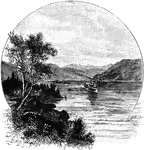
View of Lake George, N.Y.
Lake George, also known as Queen of American Lakes, is a long narrow lake at the southeast…

Volcanic Massif of the Mezenc
General view, in part schematic, of the volcanic massif of the Mezenc.

Trenton High Falls
Trenton Falls, a geologist's playground, has been inspiring generations of scientists. Referred to as…
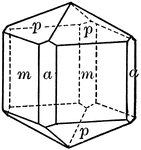
Wernerite
"Tetragonal; tripyramidal. Crystals usually prismatic. Prominent forms are prisms of the first and second…

Wernerite
"Tetragonal; tripyramidal. Crystals usually prismatic. Prominent forms are prisms of the first and second…

Zincite
"A crystal of zincite with a prism terminated by a pyramid above a basal pinacoid below." — Ford,…

